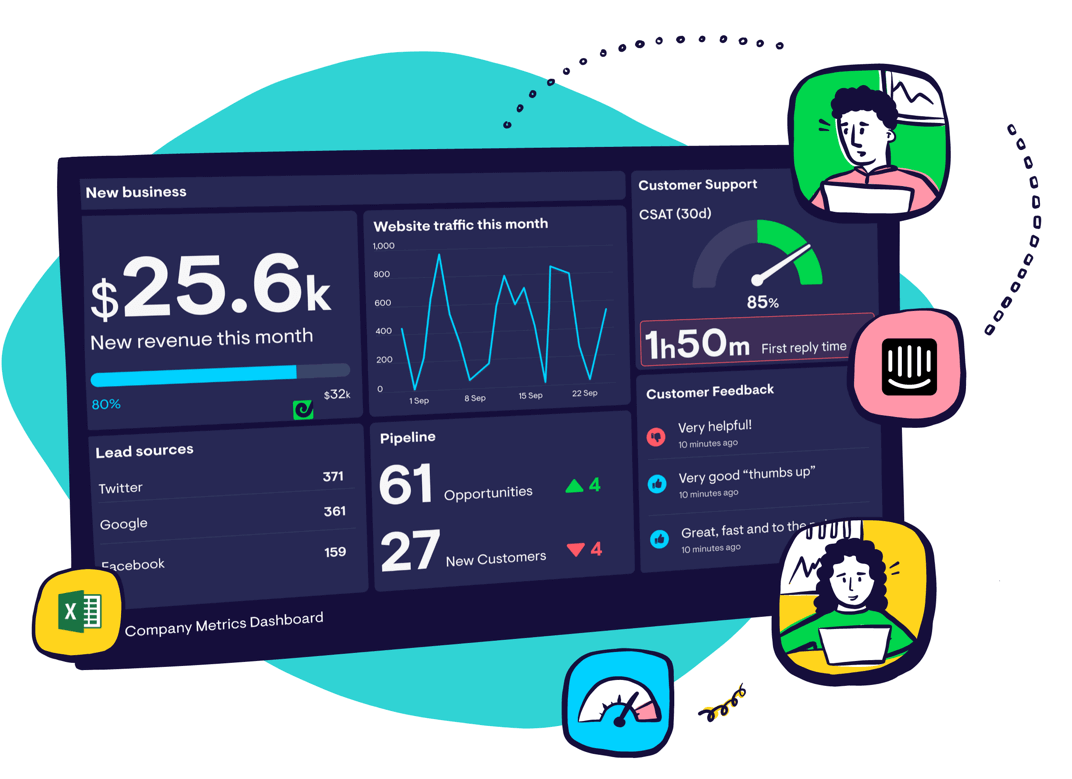Revenue Growth Rate
What is Revenue Growth Rate?
Revenue Growth Rate measures the month-over-month percentage increase in revenue. It’s one of the most common and important startup KPIs. The Revenue Growth Rate provides a solid indicator of how quickly your startup is growing.
Advice from VCs: Why Revenue Growth Rate is critical
“If a startup has a basic product or is looking for market fit, then one of the top three metrics I always ask for is MoM (Month on Month) Revenue Growth.” - William McQuillan, Partner at Frontline Ventures
“If there’s one number every founder should always know, it’s the company’s growth rate. That’s the measure of a startup. If you don’t know that number, you don’t even know if you’re doing well or badly… The best thing to measure the growth rate of is revenue. The next best, for startups that aren’t charging initially, is active users. That’s a reasonable proxy for revenue growth because whenever the startup does start trying to make money, their revenues will probably be a constant multiple of active users.” - Paul Graham, VC and Co-Founder of Y Combinator
How to calculate Revenue Growth Rate:
[ ($) Revenue Month B - ($) Revenue Month A ] / ($) Revenue Month A X 100 = (%) Revenue Growth Rate
Calculate the Revenue Growth Rate by subtracting the first month revenue from the second month revenue. Divide the result by the first month revenue and then multiply by 100 to turn it into a percentage. For example, if you have $1000 in revenue the first month and $3500 the second month, your growth rate would be 250%.
($3500 - $1000) / $1000 x 100 = 250%
For very early stage startups, tracking weekly revenue growth will be more helpful to gauge progress. Simply replace monthly revenue with weekly revenue in the calculation above.
[ ($) Revenue Week B - ($) Revenue Week A ] / ($) Revenue Week A X 100 = (%) Weekly Revenue Growth Rate
Pros:
As a more contextual metric, Revenue Growth Rate helps startups measure comparative progress (month-over-month) instead of an absolute figure (current revenue), which can be deceiving if tracked by itself. Not only is the growth rate helpful for founders, but investors are also keen to see this metric as they evaluate the startup’s current and potential growth.
Cons:
The month-over-month growth rate can be misleading for very early stage startups since it’s likely that they will see exponential growth at the beginning. The mistaken expectation is that the growth rate will stay the same or even increase, when in reality, the growth rate often decreases (from the initial exponential rate) as the company matures.
For example, a startup might have a growth rate of 150%, 76%, and 88% over the first couple months. But at this point, it’s too early to determine what a sustainable growth rate will be. It’s quite likely the growth rate will drop as the company matures. When measuring the Revenue Growth Rate, calculate a longer trend (12-18 months) to ensure your percentages reflect an accurate trend and not a one-time exponential growth curve.
Relevant Startup Metrics and KPIs:
If you’re adding Revenue Growth Rate to your Startup CEO dashboard, you might want to also consider tracking these related startup metrics for context.
Industry Benchmarks
Growth rate benchmarks vary by company stage but on average, companies fall between 15% and 45% for year-over-year growth. Businesses with less than $2 million in annual revenue generally have much higher growth rates according to a Pacific Crest SaaS Survey.
Additional Notes
“The ability to accelerate monthly revenues while decreasing monthly burn is the #1 thing I look for in a growth stage business.” - Steve Schlenker, Managing Partner at DN Capital
